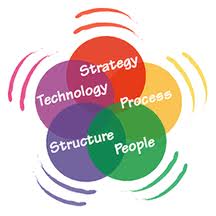Strategic change is defined as a difference in the form, quality, or state over time in organization’s alignment with its external environment. Considering the definition of strategic change, strategic change could be affected by the states of firms and their external environments. Because the performance of firms might dependent on the fit between firms and their external environments, the appearances of novel opportunities and threats in the external environments, in other words, the change of external environments, require firms to adapt to the external environments again; as a result, firms would change their strategy in response to the environmental changes. The states of firms will also affect the occurrence of strategic change. For example, firms tend to adopt new strategies in the face of financial distress for the purpose of breaking the critical situations.
The strategic change is actualized in the real world. The example of Nokia which was one of the leading makers of the mobile handsets till a few years ago and which now finds itself at the bottom of the heap along with Blackberry reminds us that the strategic drift occurs without anyone noticing it and by the time it is noticed, it is too late. On the other hand, the collapse of once famous companies like Chrysler point to the transformational change that is sudden and radical in nature. The key aspect about strategic change is that it is difficult to predict and control. Hence, the optimal way to deal with it is to expect the unexpected and be ready for anything. Unless companies embrace change, they are likely to be fossilized and unless companies prepare to deal with sudden, unpredictable, discontinuous, and radical change, they are likely to go the way of the dinosaurs.
















